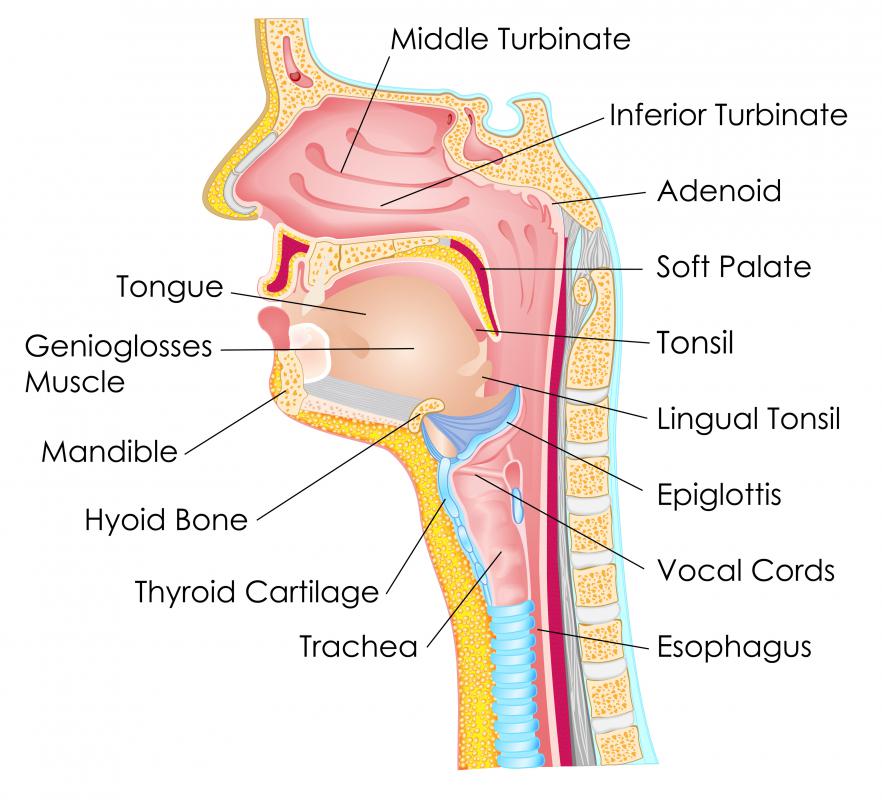At WiseGEEK, we're committed to delivering accurate, trustworthy information. Our expert-authored content is rigorously fact-checked and sourced from credible authorities. Discover how we uphold the highest standards in providing you with reliable knowledge.
What Is the Mandibular Canal?
The mandibular canal is a channel or passage found in the lower jaw, which is clinically known as the mandible. This bone derives its name from the Latin word mandibula, meaning jawbone. The purpose of the mandibular canal is to carry the structure’s blood vessels, as well as a bundle of fibers. Its etymology consists of the Latin words mandere, which means to chew; and canalis, which means channel.
Also known as the inferior maxillary bone due to its placement below the upper jaw, or maxilla, the mandible is responsible for securing the lower teeth in humans. The teeth are located in an area or cavity known as the alveolar process. This forms the upper part of the mandible’s body, and it is underneath this portion of the jawbone that the mandibular canal can be found.

The mandibular canal contains the inferior alveolar artery, or inferior dental artery; inferior alveolar nerve, or inferior dental nerve; and inferior alveolar vein. The first blood vessel functions as a facial artery. The dental nerve is a branch of the mandibular nerve, which itself is the biggest branch of the trigeminal nerve. Also known as the fifth cranial nerve, this particular blood vessel is responsible for facial sensation, contributing to dental functions such as biting and chewing. The purpose of the alveolar vein is to drain the mandible and the teeth that it holds in place.

For passage of the mandibular vessels and nerve, the mandibular canal extends from an opening that exists on the internal surface of the mandible’s perpendicular section, or ramus. This opening is called the mandibular foramen. The mandibular canal then carries the blood vessels and the nerve through the body. It exits the mental foramen, which is one of the two holes that the jawbone bears at its anterior, or front, surface. The alveolar nerve becomes the mental nerve at this point, because it provides sensation to the front teeth, chin and lower lip.
It is also at this stage that the mandibular canal transforms into the mandibular incisive canal. The passage travels bilaterally from the mental holes to communicate with the teeth with the mental nerve. The specific teeth that are supplied innervation on each side of the mandible are the incisors at the very front, the canine tooth next to them and the first of the two premolars at the jawbone’s curving end.
AS FEATURED ON:
AS FEATURED ON:












Discuss this Article
Post your comments